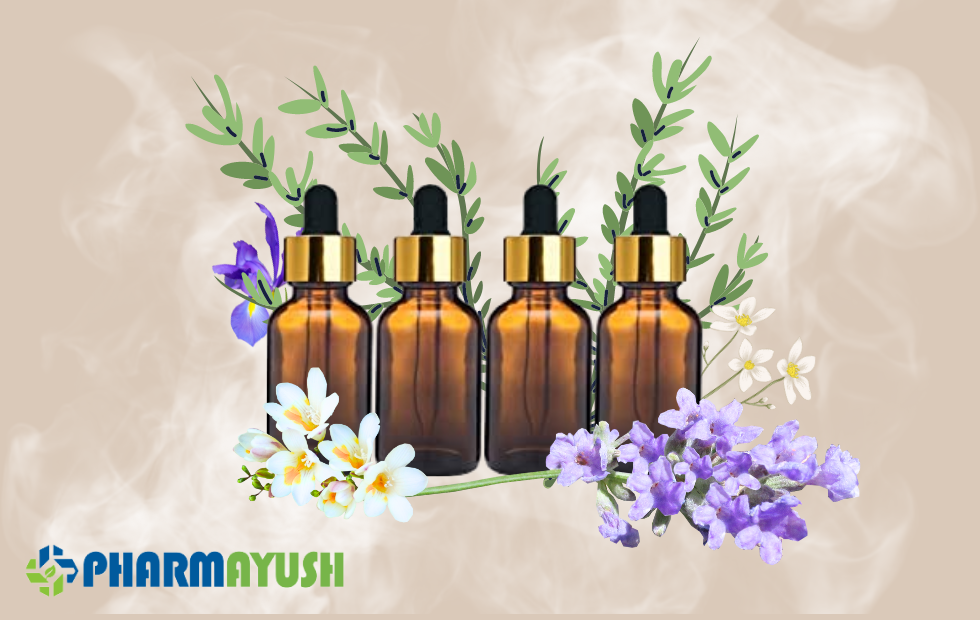Description
Ayurvedic massage is a traditional healing method. In order to balance the body's energy and improve physical and mental wellbeing, it requires the application of particular oils and procedures.

Ayurvedic massage is a traditional healing method. In order to balance the body's energy and improve physical and mental wellbeing, it requires the application of particular oils and procedures.
Ayurvedic massage is well known for its various advantages, which include lowering blood pressure, enhancing immunity, easing pain and inflammation, and enhancing skin health. In this article, we'll examine the advantages of Ayurvedic massage and offer suggestions for at-home massage oils. It is essential to remember that when selecting oils for an ayurvedic massage, individual demands and dosha types should be taken into account.
Reduces Stress and Anxiety: By encouraging relaxation and soothing the mind, ayurvedic massage treatments can help reduce tension and anxiety. The relaxing effects of oils like lavender, chamomile, and sandalwood can be used in Ayurvedic massage to relieve tension.
Improves Blood Circulation: By enhancing blood circulation, ayurvedic massage can benefit the health of the body's tissues and organs. Ayurvedic massage can increase circulation by using warming oils like those from cinnamon, ginger, and black pepper.
Immunity Booster: By stimulating the lymphatic system and encouraging the body's clearance of impurities, ayurvedic massage can help strengthen the immune system. With their well-known immune-supportive qualities, oils like eucalyptus, tea tree can be utilised in Ayurvedic massage to help the immune system.
Reduces Pain and Inflammation: By boosting circulation and encouraging the body's natural medicines to be released, ayurvedic massage can reduce pain and inflammation. Oils with established pain-relieving qualities, such as peppermint, lavender, and rosemary, can be used in Ayurvedic massage to soothe painful muscles and joints.
Improves Skin Health: Ayurvedic massage can help improve skin health by promoting circulation and hydration and by removing dead skin cells. Oils like coconut, almond, and sesame are known for their nourishing properties and can be used in Ayurvedic massage to moisturise and rejuvenate the skin.
There are many different types of massage oils available, each with its own unique benefits and properties.
Almond Oil: This oil is extracted from the seeds of the almond tree and is known for its many health benefits. Almond oil is high in essential fatty acids, which can help to improve skin texture and tone. Almond oil is also believed to have anti-inflammatory and analgesic properties, making it useful for treating joint pain and inflammation.
Coconut Oil: This nourishing oil is rich in antioxidants and has a sweet, tropical scent. It is particularly beneficial for dry or sensitive skin and can also be used as a hair conditioner.
Olive Oil: It is also a good source of vitamin E, which is important for maintaining healthy skin and hair. When used in massage, olive oil can help to relax the muscles, ease tension, and reduce stress.
Castor Oil: extracted from the seeds of the castor plant. It is often used in Ayurvedic medicine for its numerous health benefits, including its anti-inflammatory, antimicrobial, and antioxidant properties. Castor oil is believed to be particularly beneficial for promoting hair growth, reducing joint pain and inflammation, relieving constipation, and improving skin health.
Sesame Oil: This oil is extracted from sesame seeds and is known for its many health benefits. Sesame oil is rich in antioxidants, which help to protect the skin from free radical damage and premature ageing. Sesame oil is also believed to have anti-inflammatory and antibacterial properties, making it useful for treating skin conditions such as acne and eczema.
Mahanarayan Oil: This oil is made with a combination of herbs that are known for their ability to reduce pain and inflammation. It can be particularly beneficial for those with joint pain or arthritis. It can be used as a self-massage thailam after hitting the gym.
Mahamasha thailam: It is often used in Ayurvedic treatments for conditions such as joint pain, muscle stiffness, and fatigue. It is believed to help improve circulation and nourish the muscles and tissues, promoting overall healing and restoration. The warming and soothing properties of the oil can also help to calm the mind and promote relaxation.When using Mahamasha thailam,
Sahacharadi thailam: It is a traditional Ayurvedic massage oil that is often used for its anti-inflammatory and pain-relieving properties. It is made from a blend of various herbs and oils, including sesame oil, and a combination of herbs such as sahachara (Strobilanthes ciliatus), guggulu (Commiphora mukul), and ginger. It is typically used for conditions such as back pain, joint pain, and sciatica. The oil is believed to help reduce inflammation and swelling, promote circulation, and provide overall pain relief. It can also be used to improve mobility and flexibility in the affected areas.
Dhanwantharam thailam:It is often used during pregnancy to promote healthy fetal development and prepare the body for childbirth. It can help reduce pregnancy-related discomforts such as back pain, leg cramps, and swollen ankles.
Pinda thailam: is typically used for conditions such as joint pain, muscle stiffness, and arthritis. The oil is believed to improve circulation and reduce inflammation, providing relief from pain and stiffness. The warming properties of the oil can also help calm the mind and promote relaxation.
Ayurvedic massage is a powerful tool for promoting physical and emotional wellness. Incorporating specialised herbal oils into your massage practise can provide additional benefits tailored to your dosha type and health concerns. Whether you're looking to reduce stress, improve circulation, or promote relaxation, Ayurvedic massage can be a safe and effective way to enhance your overall well-being. By following the tips and techniques outlined in this article, you can enjoy the benefits of Ayurvedic massage in the comfort of your own home.
All your ayurvedic medical needs can be fulfilled by PHARMAYUSH, it is an online platform for all ayush medicines and products, where customers can buy ayurveda, siddha, unani, cosmetic products and homeo medicines in a single online platform.